Types of Fabric best for Bulk T-shirt Printing
Do you know the rookie mistake most of the people make while making a custom t-shirt? It is just focusing on the look of their t-shirts, which is not enough. Whether you are making custom t-shirts for events, giveaways or your team, it is important to maintain the quality of the fabric as well. Good quality fabric guarantees comfort and lasts longer.
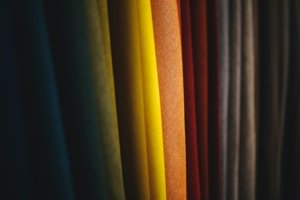
Photo by Kaboompics .com from Pexels
While putting in a request for custom t-shirts, do ensure you’re not settling on quality, it is critical to check the fabric being utilized to make them. The adequacy of your design additionally relies a great deal upon the fabric of the t-shirts.
There are a lot of things that people think of when it comes to t-shirt fabrics. Each fabric has its various pros and cons, and no hard evidence seems to show that one is better than the other – you just have to make sure that you choose the right one for you. The fabric plays a big part in not only the design and printing, but in the way it feels and the way it’s worn. Some of the t-shirt fabrics hold ink better, and others will last longer. If you know the difference between the fabrics, you’re going to make a better decision.
There are a ton of options that you can consider with regards to t-shirt fabrics. Every fabric has its different advantages and disadvantages, and no hard proof appears to show that one is in a way that is better than the other – you simply need to ensure that you pick the correct one for you. The texture has a major influence in the plan and printing, however in the manner in which it feels and the manner in which it’s ragged. Some shirt textures hold ink in a way that is better than others, and others will last more. In the event that you know the distinction between the textures, you will settle on a superior choice.
Types of fabric used for T-shirt Printing
Basically there are only two main classifications of fabric: Natural fabric and Synthetic. Natural fabrics are made with fibres derived from natural resources, for example, creatures and plants. The most well known natural resources for fabric are Abaca, Bamboo and Cotton (for animal-based ones) and Cashmere, Wool and Silk (for creature based ones). Synthetic fabrics, (man-made) are celebrated for their high flexibility and impermeability, which makes them ideal for athletic apparel. Probably the most famous engineered textures are Nylon, Polyester and Spandex/Lycra.
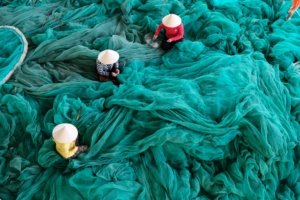
Nonetheless, with regards to wholesale T-shirt printing customisation, the arrangement somewhat varies relying upon how the pieces of clothing are created. The printing business works best with cotton-based pieces of clothing and polyester-based pieces of clothing. The arrangement of the texture varies from ‘Cotton-based’,’Blended’, ‘Natural’ and ‘Reused’. Let’s take a deeper look at this.
From the second you connect to TeePrint T-shirt printing specialists and they will respond to the entirety of your inquiries and find proficient answers for your requirements. It is our main goal to help you achieve your objectives.
1.Cotton
Cotton has a dense fabric, it assimilates ink in a way that is better than other fabrics like polyester. This gives TeePrint cotton custom t-shirts a greater print quality, guaranteeing the logo on your custom shirts looks more clear and more keen. Dying (where the color runs during the printing cycle) is less of an issue with cotton.
Since cotton is a natural item and as a result of the manner in which it is planned and manufactured into clothing, it has numerous advantages, for example, its capacity to control the dampness, protect, give solace and is additionally hypoallergenic, weatherproof and has a solid texture.
Types of Cotton:
- Combed cotton is made when short strands are wiped out, at that point fine brushes fix the filaments. This makes the texture milder, smoother, and more grounded. It makes for a superior material for printing.
- Organic cotton is a milder, more agreeable and a well known choice. It’s more costly than ordinary cotton, and the cotton is developed without numerous composts or pesticides.
- Pima cotton is known to be the most excellent cotton, with extra long strands which guarantee the delicateness of the shirt texture. Pima cotton is strong – it opposes pilling, blurring, and extending. Supima is a similar sort of cotton as Pima, yet it’s particularly filled in the US.
- Slub cotton is a sort of cotton that appears as though it has slight bumps in the texture. This is made before the cotton is weaved, where the cotton is curved, and the turns are sporadic. Slub cotton is novel – it’s light, vaporous and doesn’t stick to the body. It’s additionally normally finished, which implies that there is no compelling reason to press it.
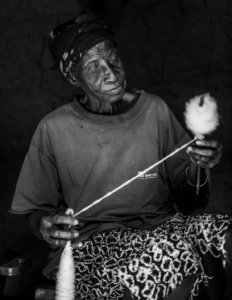
Photo by Julie Krabbe Clausen from Pexels
2.Linen
Another natural fabric that is most appropriate for mid year clothing, this texture is lightweight. There are a great deal of shirts that are made with material. It isn’t as regular as different materials for custom t-shirts. It very well may be an incredible decision for its dampness retaining and breathable feel. Be that as it may, it may not be appropriate for all printing procedures, as it can easily wrinkle..

Photo by emre keshavarz from Pexels
3.Polyester
Another basic texture utilized for t-shirts is Polyester. It’s snappy and doesn’t mold. It additionally keeps up its shape without extending. Most athletic attire organizations use polyester in their t-shirts. Polyester is engineered and incorporates textures like nylon, acetic acid derivation, and acrylic.
Polyester is tough, drying quick after a wash. It’s likewise adaptable, practical, can possibly be reused, and can mix with cotton. Alongside these positive credits some negative impacts shockingly. Polyester doesn’t separate rapidly, doesn’t inhale effectively, and it can deliver plastic microfibers when it’s being washed which thus causes water contamination.

Photo by Budgeron Bach from Pexels
Despite the fact that it may not be as agreeable as cotton, it is a favored medium to work with regards to the exchange printing strategy. As it requires passing the plan from an uncommon sort of paper or plastic to the article of clothing, this texture empowers better connection of the plan.
4.Rayon
Rayon is another athletic-wear fiber, and it’s been made as a moderate option in contrast to silk. Rayon is a man-made fiber framed from trees, plants, and cotton. What you get in the end is a breathable texture that feels sleek and wraps easily. It colors well, and it’s spongy. Nonetheless, it wrinkles simply and isn’t known as the most eco-cognizant alternative.
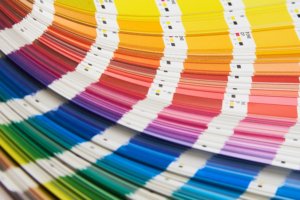
5.Lycra
Lycra is the most popular name, however it’s Spandex which is an added substance to other shirt materials. It’s utilized to give shirts more space to stretch, and it’s found in athletic wear more than all else in light of the simplicity of development.
There are low-end cottons and top of the line cottons. The more tight the weave, the more extended the shirt will last. It doesn’t imply that the shirt is heavier or wears in an unexpected way, it just implies that the thickness of the texture is not quite the same as the thickness (which may look like one in the equivalent yet it isn’t!). The length of the fiber for the most part decides the quality that you find in cotton and the more it is, the better it is. It tends to be reinforced together to be sturdy and delicate, and non-abrasiveness is ordinarily connected with great quality. It’s likewise, unfortunately (for you), something that can be cheated. Starch can make a texture delicate to the touch, yet that delicateness can disperse over the long run.
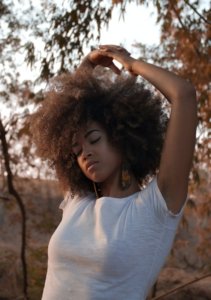
Photo by Orione Conceição from Pexels
Which fabric is best for your bulk T-shirt Printing?
There are both good and bad materials – the equivalent can be said for manufactured materials. Polyester mainly has a bad standing, however it doesn’t imply that it’s a terrible material to use. A few brands pick fabricated materials to minimize expenses. Different occasions, artificial materials are utilized to add flexibility, impermeability, and breathability. Manufactured athletic clothing is only human-made.
Understanding the way that a t-shirt is manufactured will assist in getting a thought of it’s quality. It doesn’t make a difference how great the material is if the development is poor.
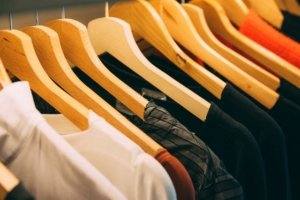
Photo by Kai Pilger from Pexels
There are various kinds of weaves and fastens used to assist with the sturdiness of shirt texture, and there are likewise tests that you can run while you’re purchasing your shirt:
Contact– Simply contacting the shirt can let you know whether the quality is acceptable. It shouldn’t feel harsh to the touch or excessively meager, it should be firm and delicate simultaneously. The odds are the material will be a superior quality when it’s both firm and delicate.
Marks – There won’t be a string check, however it’ll show what the material is made of and whether it’s been blended in with another texture/fiber will appear on the mark.
Wrinkle It – Fold a bit of the shirt in your grasp and let go. On the off chance that there are still wrinkles, the quality won’t be that incredible.
Stitch Count – These keep everything together, and producers consistently give more consideration to the outside as that is the thing that the public sees. The least demanding approach to tell if a join is progressed admirably or not is to check within it. Check for free strings and indications of helpless assembling.
At TeePrint, we provide a wide range of custom t-shirts suited for all occasions. Reach us to find the best type of custom t-shirts based on your requirements!
References –
Wikipedia – https://en.wikipedia.org/wiki/Clothing_material
LiveStrong – https://www.livestrong.com/article/59826-advantages-cotton-clothing/
 Location:
Location:  Email
Email 